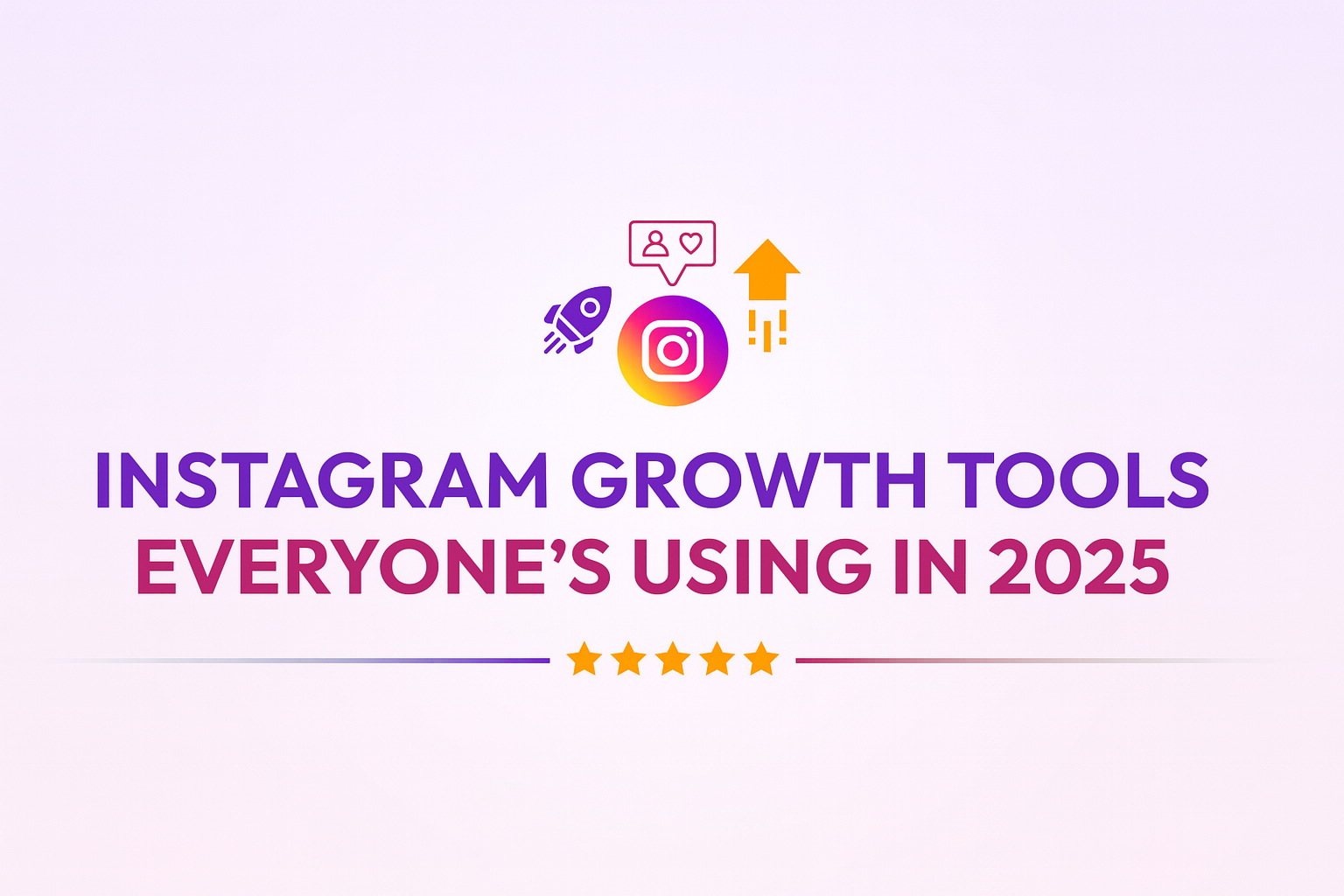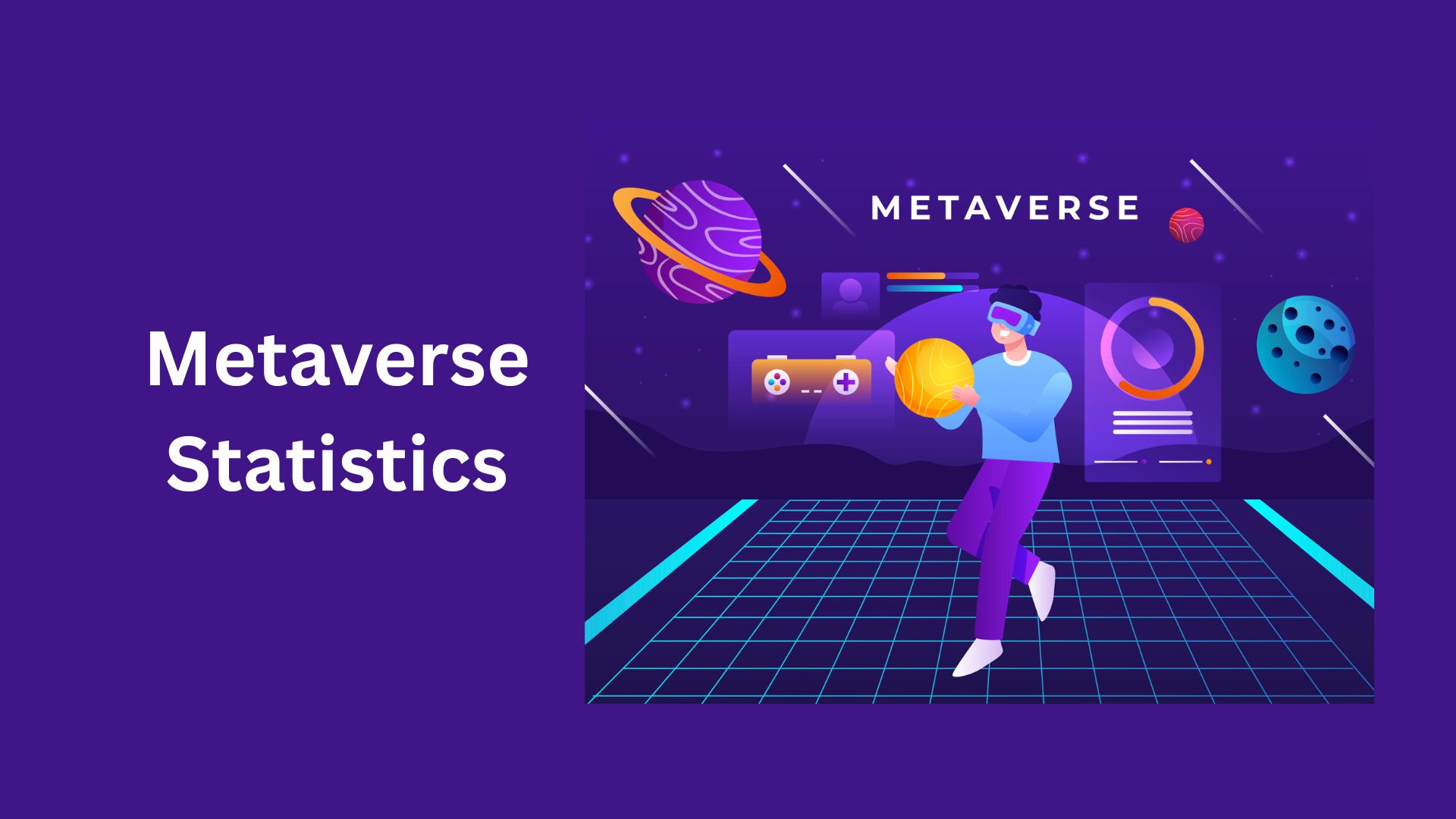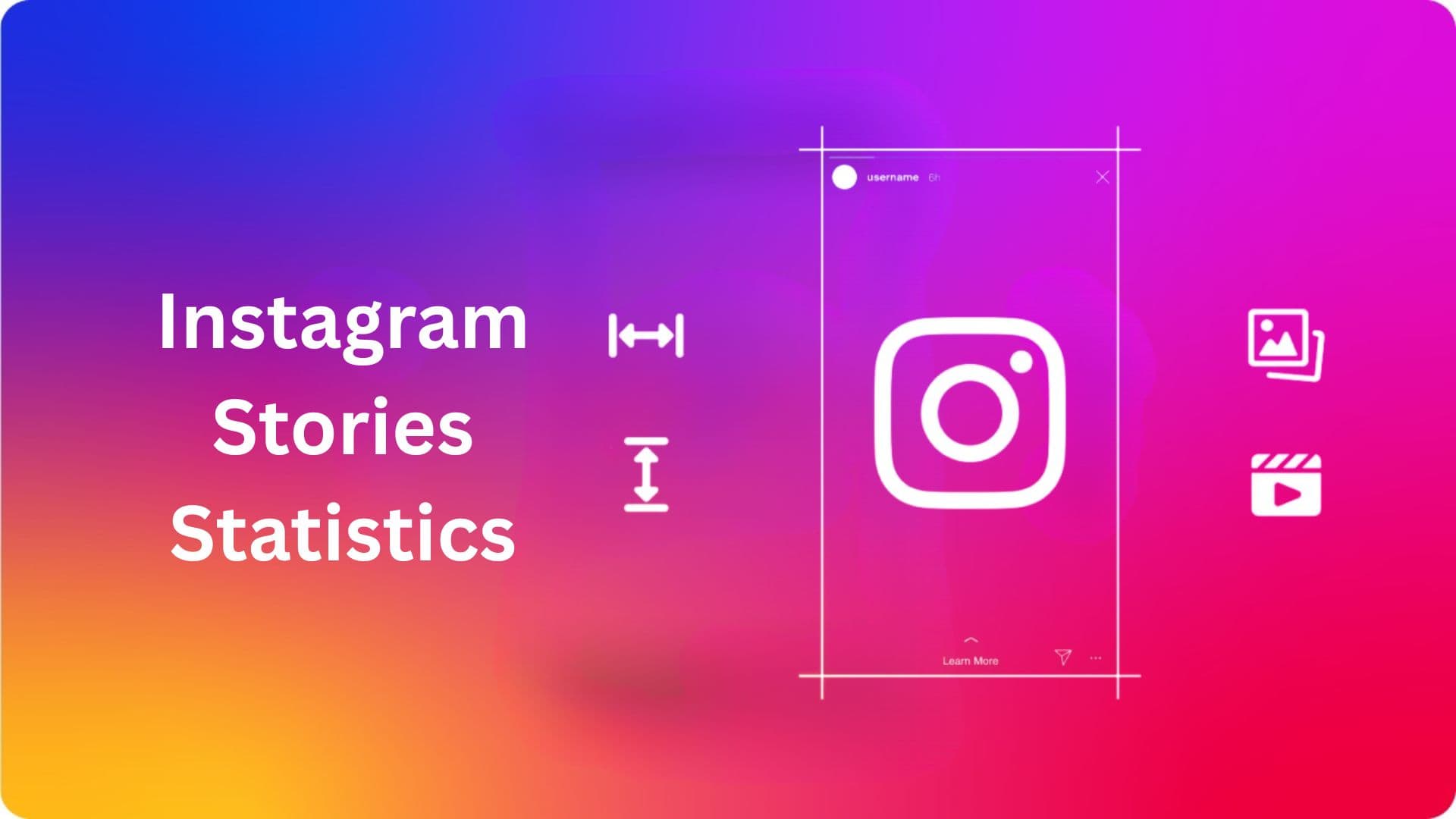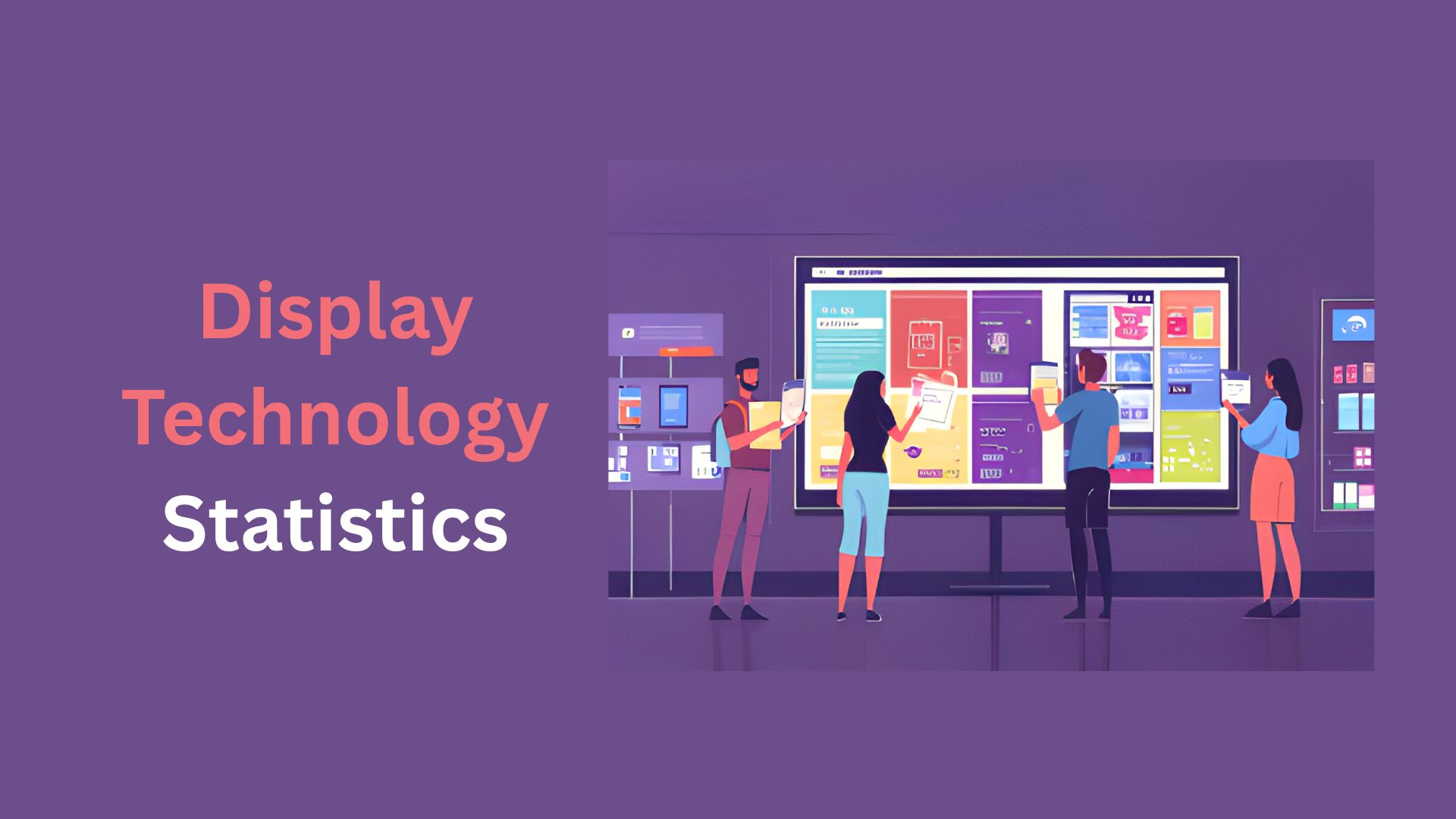Top 10 Augmented Reality Companies in the World
Updated · Oct 26, 2025
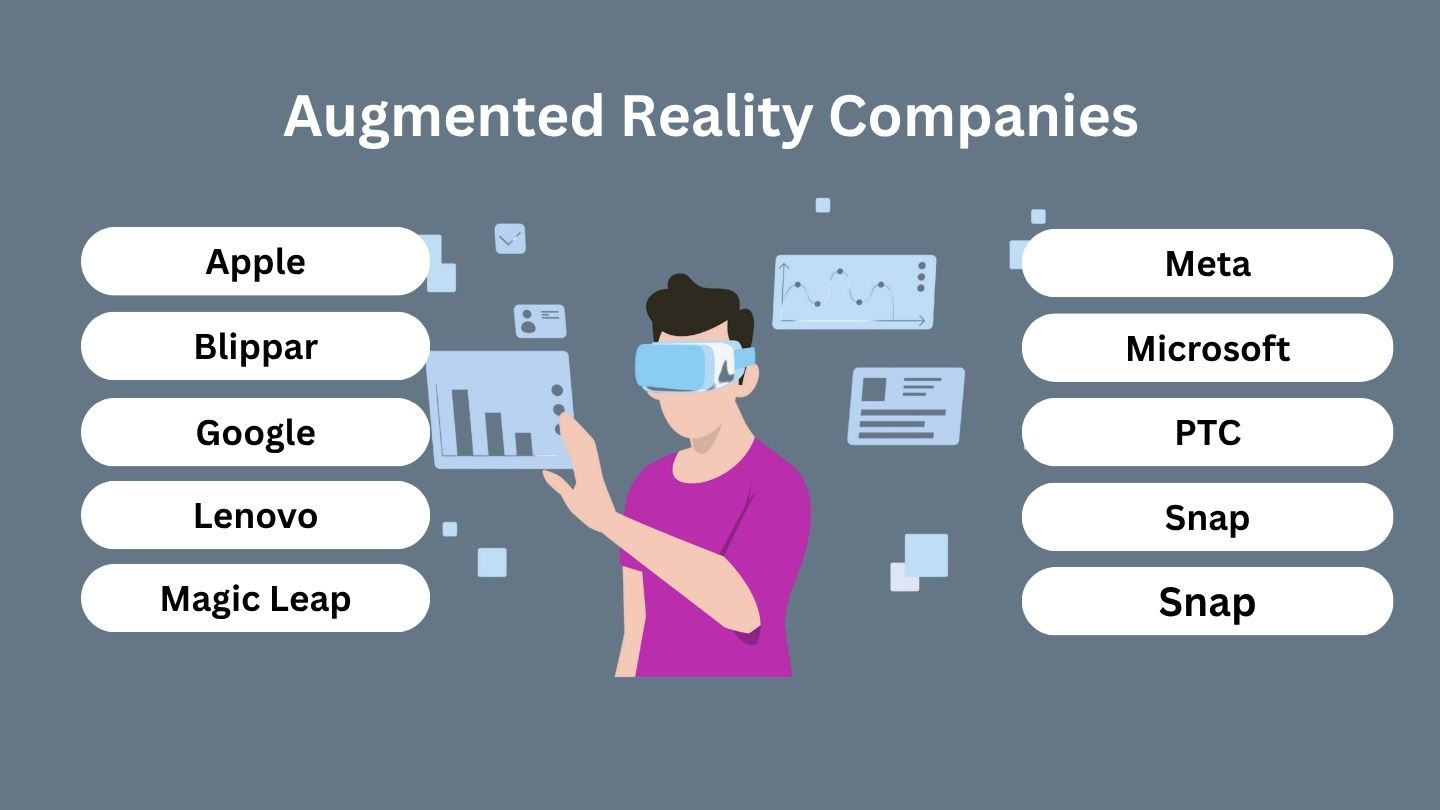
Table of Contents
Introduction
Augmented Reality (AR) is a technology that blends digital information with the real world. It adds computer-generated images, sounds, or other data to what people see around them through devices like smartphones, tablets, or AR glasses. In simple words, AR enhances real-life experiences by overlaying virtual elements onto physical surroundings. For example, when using an AR app, you might see a virtual sofa placed in your living room or digital directions appearing on the road in front of you. It is widely used in gaming, shopping, education, and healthcare to make interactions more engaging and informative.
Augmented Reality Market Size
- According to Market.us, the global Augmented Reality (AR) market is expected to reach USD 591.7 billion by 2033, growing at a CAGR of 39.5% from 2024 to 2033. The market value is projected to be around USD 29.6 billion in 2024.
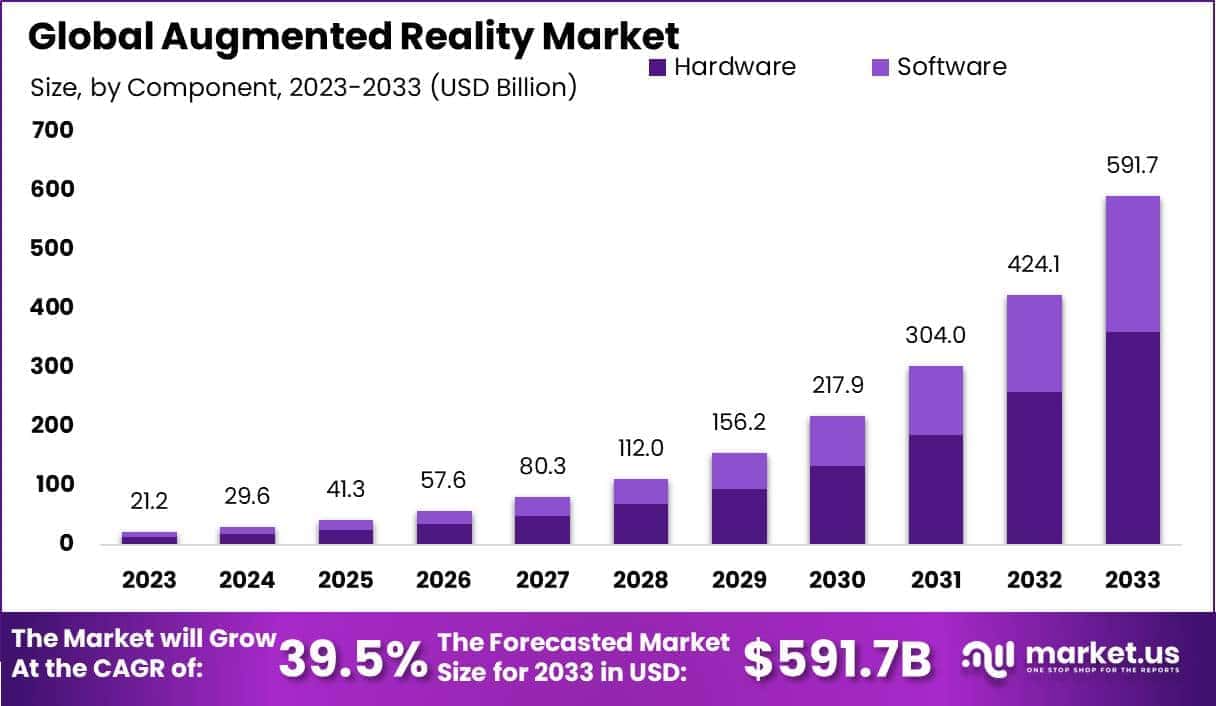
- In 2023, the hardware segment held a leading market position, accounting for over 61% share of the total market.
- The Head-Mounted Display (HMD) category dominated the product segment with a 57% market share in 2023.
- The industrial and manufacturing segment led the end-use market, capturing more than 25% share in 2023.
- North America remained the dominant regional market in 2023, holding over 36% share.
- The total number of mobile AR users is expected to reach 1.73 billion by 2024.
- Around 64% of consumers believe that AR technology enhances their shopping experiences.
- Global AR revenue is expected to reach approximately USD 340 billion by 2028.
- Nearly 67% of digital media planners prefer to include AR or VR advertisements in their campaigns.
- The majority of AR users belong to the 16–34 age group.
- Approximately 86% of users first experience AR through their smartphones.
- The United Kingdom represents around 9% of the global immersive reality market.
- By the end of 2023, there were an estimated 1.4 billion AR users worldwide.
- About 50% of Americans use AR technology without being aware of it.
- Nearly 70% of consumers believe AR can help them learn new skills.
- Around 32% of Americans have shown interest in AR-based video games.
- Among older adults, 56% of those aged 45–54 are familiar with AR, compared to 44% in the 55–64 age group.
- Over 90% of Gen Z consumers express interest in AR shopping experiences.
- North America (USD 220,000) and Europe (USD 190,000) are major contributors to AR market revenues.
- By 2025, the AR market in the automotive sector is projected to reach USD 2–3 billion in value.
- In surveys, 49% of respondents identified privacy and data security as top legal concerns when using AR or VR technologies.
- Around 61% of consumers prefer retailers that offer AR experiences.
- In Japan, 66% of shoppers want physical stores to include AR features.
Major Augmented Reality Companies
- Apple, Inc.
- Blippar Limited
- Google LLC
- Lenovo Group Ltd
- Magic Leap, Incorporated
- Meta
- Microsoft Corporation
- PTC Inc.
- Snap, Inc.
- Sony Corporation
Apple, Inc.
| Field | Information |
| Company Type | Public company listed on NASDAQ under the ticker AAPL. Apple is described as an American multinational technology company. |
| Parent organization | None. Apple Inc. operates as an independent publicly traded corporation. |
| CEO | Tim Cook, Chief Executive Officer of Apple Inc. since August 2011. |
| Number of Employees | Approximately 164,000 full-time equivalent employees as of September 28, 2024, according to the company’s Form 10-K filing. |
| Established date and year | Apple was founded on April 1, 1976 in California by Steve Jobs, Steve Wozniak, and Ronald Wayne. (Apple later incorporated in 1977.) |
| Subsidiaries (illustrative) | Apple operates multiple wholly owned subsidiaries, including retail, services, silicon design, and international holding entities. Publicly visible major operating subsidiaries include Apple Operations International, Apple Services, and Apple Retail entities in different countries. These are managed under Apple Inc. for global product, services, and retail operations. |
| Products | Consumer hardware and platforms including iPhone, iPad, Mac, Apple Watch, AirPods, and Apple TV; software and services including iOS, macOS, watchOS, iCloud, Apple Music, Apple TV+, and App Store; and new spatial computing products such as Apple Vision Pro. |
| Headquarters | One Apple Park Way, Cupertino, California 95014, United States. This campus, known as Apple Park, serves as Apple’s global corporate headquarters. |
| Geographical Presence | Apple reports global operations with corporate, R&D, supply chain, and retail activities across the Americas, Europe, Greater China, Japan, and the Rest of Asia Pacific. The company continues to expand its physical retail footprint in high growth regions such as India and the Middle East, including plans for new Apple Stores in India and the United Arab Emirates and an online store launch in Saudi Arabia. |
| Website | https://www.apple.com |
- Apple introduced Apple Vision Pro in the United States on 2 February 2024 at a price of USD 3,499, using a dual-chip design with the M2 chip for application processing and the R1 chip to process input from 12 cameras, 5 sensors, and 6 microphones in real time, in order to align digital content with the physical world for augmented reality use.
- The headset delivers about 23 million pixels across two micro-OLED displays, which Apple describes as higher than a 4K TV for each eye, with per-eye resolution around 3660 by 3200 pixels and a field of view reported near 100 degrees by 73 degrees, indicating very high pixel density for mixed reality and passthrough augmented reality viewing.
- Apple visionOS 2 was announced on 10 June 2024 and released on 16 September 2024, adding machine learning features that convert normal 2D photos into spatial photos with depth, new hand gesture controls for faster navigation, and improvements to Mac Virtual Display, which strengthened collaboration and productivity use cases inside augmented reality workspaces.
- At WWDC 2025, Apple presented visionOS 26 with persistent spatial widgets that stay anchored in the user’s real environment, Look to Scroll eye-based control, support for PlayStation VR2 Sense controllers, shared multiuser spatial sessions in the same room, iPhone interoperability while wearing the headset, and new enterprise APIs, showing continued targeting of professional and industrial augmented reality users.
- Apple publicly highlighted enterprise scenarios such as design review, training, and collaboration, and reporting in September 2025 indicated that the largest early customer base for Apple Vision Pro is the enterprise segment rather than the mass consumer segment.
- Industry reporting through 2024 and 2025 stated that Apple has been preparing multiple Vision headsets, including a lighter and more affordable model and another model designed to connect directly to a Mac for ultra-low-latency professional workloads, which is intended to address current barriers related to price, comfort, and battery life.
Recent Developments
- Reuters and Bloomberg reported on 1 October 2025 that Apple paused a full next-generation Vision Pro overhaul and shifted engineering resources toward artificial intelligence smart glasses, including an early model that pairs with an iPhone and a later model with its own display, with internal targets pointing to commercial timing around 2027 and later. This step was described as a strategic response to competitive pressure from Meta’s smart glasses line.
- Bloomberg also noted in October 2025 that Apple still plans a modest Vision Pro refresh with a faster chip as early as late 2025, which indicates that Apple continues to iterate the current headset even while it prioritizes long-term AR glasses.
- Media coverage in late 2024 stated that Apple scaled back Vision Pro production targets and daily output, with reports that manufacturing had been reduced from about 2,000 units per day to about 1,000 units per day and that total sales volumes were lower than early expectations, which shows that price and comfort remain key restraints for mainstream augmented reality adoption.
- At WWDC 2025, Apple announced new partnerships with Sony, Canon, GoPro, and Insta360 to deliver 180-degree and 360-degree immersive video for Vision Pro, which is expected to increase spatial media supply and strengthen Apple’s position in professional content creation for augmented and mixed reality.
Blippar Limited
| Field | Information |
| Company Type | Private limited company focused on augmented reality software and services. Blippar Limited is registered in the United Kingdom as a private limited company under company number 11787934. |
| Parent organization | Blippar Group Limited, which is registered in the United Kingdom as a private limited holding company and shares the same registered office address. |
| CEO | Preet Prasannan is listed as Chief Executive Officer and Director of Blippar, according to Companies House and company disclosures. |
| Number of Employees | Company size is reported as 51 to 200 employees, and the company describes itself as a world leading augmented reality and AI technology company. |
| Established date and year | Blippar was originally founded in 2011 as an augmented reality company in London. The current legal entity Blippar Limited was incorporated on 25 January 2019 in the UK. |
| Subsidiaries | Blippar acquired Dutch AR company Layar in 2014. Layar is described as a subsidiary brand under Blippar and is identified with Blippar as parent. |
| Products | Blippar provides WebAR and spatial computing tools and services including Blippbuilder (a no-code AR creation platform), the WebAR SDK, and a first-party AR Studio that builds custom AR campaigns for global brands. |
| Headquarters | Registered office: 49 Upper Brook Street, Mayfair, London, W1K 2BR, United Kingdom. This London address is listed for both Blippar Limited and Blippar Group Limited. |
| Geographical Presence | Blippar states that it serves clients worldwide and works with global brands. Public employee distribution data shows active staff across North America, Europe, and Asia, including the United Kingdom, United States, India, the Netherlands, the United Arab Emirates, and others. |
| Website | https://www.blippar.com |
- Blippar Limited is described as a United Kingdom based augmented reality company that provides self-service AR creation tools such as Blippbuilder and its WebAR SDK, which allow users to design, publish, and share browser based AR experiences on mobile and desktop without writing code or forcing end users to download an app.
- The company has attracted a total of about USD 141 million in external funding across multiple rounds from investors including Qualcomm Ventures, West Coast Capital, and Khazanah Nasional Berhad, indicating strong financial backing for its augmented reality and computer vision platform as of August 2025.
- Blippar has reported that WebAR and AR ad units can deliver up to 30 percent higher engagement and up to 11x longer dwell time than comparable non AR digital placements, and that these AR units have achieved an average click through rate near 0.1 percent with typical dwell times of 40 to 50 seconds, showing that augmented reality formats drive longer attention per user session than standard display media.
- A branded mixed reality program using Blippar technology for EE business billing inserts generated an average of about 3 minutes of dwell time per customer and increased awareness of EE’s product range, which illustrates measurable uplift in message retention and product education when augmented reality is embedded in traditional print touchpoints.
- Blippar stated that at Bett 2025, described as the world’s largest education technology event at ExCeL London, its team engaged with educators, students, and technologists over three fully booked days and welcomed hundreds of visitors to the Blippar stand, where attendees created their own lessons using the company’s no code Blippbuilder platform.
- The company highlighted that its WebAR SLAM tracking is used daily worldwide and that its solutions are being positioned to run across emerging head mounted displays including Apple Vision Pro, Meta Quest, and Pico, which signals an explicit strategy to supply content and tools for spatial and wearable augmented reality hardware, not only for mobile phones.
- Historical disclosures show that by the time Blippar closed its USD 54 million Series D round in 2016, it had built a global technical footprint with about 60 engineers in San Francisco and Mountain View and about 300 employees across 14 offices worldwide, which indicates that the company has operated AR content creation at multi region scale for more than a decade.
Recent Developments
- On 25 April 2024, Blippar announced Blippbuilder Mobile, which extends its no code AR authoring environment to the mobile web so that creators can design and publish augmented reality scenes directly from any phone browser, removing the need for a desktop workflow and reinforcing the company’s goal of making AR content creation accessible on any device.
- On 6 February 2025, Blippar publicly positioned education as a strategic growth use case by showcasing Blippar for Education and Blippbuilder in schools oriented demos at Bett 2025, and emphasized demand from teachers who want to bring interactive AR lessons into classrooms without specialist technical skills.
- On 1 May 2025, Blippar stated that mass adoption of AR glasses is viewed internally as the next computing shift and confirmed that it is actively building solutions intended for lightweight wearable AR with a wide field of view and hands free interaction, while continuing to support browser based WebAR.
- In April 2024, Blippar announced a strategic partnership with Arabian Business Machines, part of Olayan Saudi Holding Company, and described Saudi Arabia as a key regional focus for future XR projects, which indicates that the company is targeting commercial growth in the Middle East through local enterprise channels.
- Leadership changes communicated by the company confirmed that Preet Prasannan, previously Chief Technology Officer, was appointed Chief Executive Officer and continues to lead Blippar’s augmented reality platform strategy, which includes no code creation, WebAR delivery, and readiness for AR headsets.
Google LLC
| Field | Information |
| Company Type | Limited liability company. Google LLC operates as a subsidiary of Alphabet Inc. |
| Parent organization | Alphabet Inc. Alphabet is a publicly traded technology holding company created in 2015 to be the parent of Google. |
| CEO | Sundar Pichai is Chief Executive Officer of Google and also CEO of Alphabet. |
| Number of Employees | Alphabet, the parent of Google, reported 187,103 employees as of June 30, 2025. Alphabet reported 183,323 employees as of December 31, 2024. Google does not publicly break out a separate headcount for Google LLC. |
| Established date and year | Google was incorporated on September 4, 1998 in California. The company later became Google LLC after the Alphabet restructuring. |
| Subsidiaries | Examples include YouTube LLC, Waze, Fitbit, Nest Labs and other acquired or integrated businesses that operate under Google in areas such as video, mapping, wearables and smart home. |
| Products | Key products and platforms include Google Search, Android, Chrome, Google Cloud, Google Workspace, YouTube, Pixel hardware, Nest devices and Gemini artificial intelligence. |
| Headquarters | Googleplex, 1600 Amphitheatre Parkway, Mountain View, California 94043, United States. |
| Geographical Presence | Google operates worldwide. The company maintains engineering, sales and regional offices across North America, Latin America, Europe, the Middle East, Africa and Asia Pacific. Locations published by the company include Mountain View, New York, London, Dublin, São Paulo, Toronto, Dubai, Johannesburg, Nairobi, Tel Aviv, Bangalore and many others. |
| Website | https://about.google/ |
- Google’s ARCore platform is reported to support roughly 1.4 billion Android devices, which shows that Google can offer augmented reality capability at global Android scale for developers and end users.
- Google confirmed that the ARCore Geospatial API can anchor digital objects to real-world locations using Google Maps and Street View data in up to 87 countries, and that content can be attached to almost any place captured in Street View. This capability uses Google’s Visual Positioning System to localize a user’s phone more precisely than GPS alone.
- Google has stated that Google Lens is used by more than 1.5 billion people every month, and that Lens generated nearly 20 billion visual search queries per month, with about 1 in 4 of those searches showing commercial intent. This confirms that visual augmented reality style search has already become a mainstream shopping discovery channel.
- Google also reported that visual search usage in Lens grew by about 65 percent year over year, and that Lens activity increased by about 5 billion searches since October 2024, which indicates rapid acceleration in camera based and AR assisted search behavior.
- Google Maps is now being used to surface geospatial AR content from partners inside the Maps experience for more than one billion global users, allowing people to lift a phone and view AR layers on site or view the same AR scenes remotely in Street View.
- Google’s Project Astra has been presented as a multimodal AI assistant that can interpret a live camera view, highlight relevant objects, remember user context, and run both on Android phones and on prototype glasses, which shows that Google is preparing AI driven wearable augmented reality assistance with persistent memory across devices.
Recent Developments
- Google and Samsung jointly introduced Android XR, an extended reality operating system based on Android that is designed for headsets and smart glasses and is tightly integrated with Google’s Gemini AI assistant. Android XR was first announced in December 2024 and is positioned to ship on commercial hardware in 2025.
- Samsung officially launched the Galaxy XR mixed reality headset on 21 October 2025 with Android XR, describing it as co-developed with Google and Qualcomm, priced at about USD 1,799.99, and featuring Gemini voice and eye tracked interaction, Google Maps, YouTube, and Circle to Search in a high resolution passthrough view.
- At Google I/O and in 2025 public briefings, Google showed Android XR running not only on headsets but also on prototype smart glasses, and highlighted that AI centric features like Gemini and Circle to Search are intended to work hands free in glasses. This indicates Google’s intent to extend augmented reality beyond phones into lightweight eyewear.
- Google DeepMind described Project Astra in 2024 and 2025 as a research path toward a universal AI assistant that can see through a camera, understand surroundings in real time, and respond without delay, and stated that Astra is being prepared for new form factors such as glasses. This suggests that Google views AI perception plus spatial awareness as the core layer for next generation AR experiences.
- Google confirmed that ARCore and Geospatial features are being pulled directly into Google Maps as AR “experiences,” meaning branded or informational AR scenes can be discovered by searching a place in Maps and then simply lifting the phone, which shows a shift from standalone AR demos toward AR as a standard Maps feature.
Lenovo Group Limited
| Field | Information |
| Company Type | Public company listed on the Hong Kong Stock Exchange under stock code 992 and trading in the U.S. via ADR LNVGY. |
| Parent organization | None. Lenovo Group Limited operates as an independent publicly traded multinational technology company. |
| CEO | Yang Yuanqing (Yuanqing Yang) serves as Chairman and Chief Executive Officer. |
| Number of Employees | Approximately 72,000 employees as of 31 March 2025. |
| Established date and year | Founded on 1 November 1984 in Beijing, originally as Legend before adopting the Lenovo name. |
| Subsidiaries (illustrative) | Motorola Mobility LLC (smartphones, mobile devices), operated as a wholly owned subsidiary of Lenovo following its acquisition from Google, and continues to design and manufacture Motorola-branded phones. |
| Products | PCs and workstations (ThinkPad, ThinkCentre, Yoga, Legion), smartphones under Motorola, tablets, servers and infrastructure solutions, edge and high-performance computing systems, as well as smart devices and services. |
| Headquarters | Lenovo identifies dual headquarters in Beijing, China and Morrisville, North Carolina, USA. The registered office is in Hong Kong SAR. Key operational addresses include Building 2, No.10 Courtyard Xibeiwang East Road, Haidian District, Beijing 100094, China, and 8001 Development Drive, Morrisville, NC 27560, USA. |
| Geographical Presence | Lenovo operates in more than 60 countries and sells products in around 180 markets worldwide. The company describes itself as a global technology provider serving customers in 180 markets, with major centers in China, the United States, Europe and Asia Pacific. |
| Website | https://www.lenovo.com |
- Lenovo markets ThinkReality A3 as enterprise augmented reality smart glasses that weigh under 130 grams, use dual 1080p AR displays, include an 8 megapixel camera and dual fisheye cameras for 6 degrees of freedom tracking, and run on Qualcomm’s XR-1 Smartviewer chip. These glasses are designed to create a secure, private virtual workspace for the user.
- The ThinkReality A3 glasses can be connected to a compatible Lenovo PC or to a Motorola Edge+ smartphone to enable a mobile AR workspace with support for 5G and Wi-Fi 6, and they can show multiple virtual monitors at the same time for work with confidential data in public environments.
- Lenovo’s ThinkReality VRX is positioned as a 6 degrees of freedom standalone XR headset for training and simulation in areas such as safety, field service, design review, and collaboration. The headset uses the Qualcomm Snapdragon XR2+ Gen 1 chipset, provides 12 GB RAM, supports both standalone and PC streaming modes, and is offered at around USD 1,299 for enterprise buyers.
- The ThinkReality VRX display is specified at 2280 by 2280 pixels per eye, with a field of view of about 95 degrees and a refresh rate up to 90 Hz. The device also integrates four 6DoF tracking cameras and two full color passthrough cameras to enable mixed reality, and it includes a 6900 mAh battery for mobile use.
- Lenovo has stated that its XR strategy is centered on enterprise scale, not consumer hobby use. The company has built device management, remote assistance, and guided workflow capabilities around ThinkReality hardware so that customers can use AR and VR for tasks such as onboarding, safety training, and field maintenance rather than only for entertainment.
- Lenovo’s Head of XR Commercialization has indicated that the company is targeting organizations that are ready to move from pilot projects to wide deployment, and that content creation timelines for immersive training are already being compressed from six months to as little as six weeks by the use of generative AI.
Recent Developments
- On 8 April 2025, Lenovo announced that it will resell Meta Quest 3 and 3S headsets to enterprise and education buyers, with Lenovo Integrated Solution Support (LISS) acting as a single point of contact for hardware and service issues. The company stated that LISS provides dedicated call center access and full case management so that customers receive fast resolution when rolling out mixed reality at scale.
- Lenovo confirmed in the same April 2025 communication that the Meta partnership will include access to a large catalog of third party XR training and collaboration software, and that authorized Lenovo and Meta sellers in North America can supply these headsets under Lenovo’s service structure.
- In August 2025, Lenovo publicly emphasized that its XR approach in 2025 is built on full solutions. The company described a model in which hardware, software from independent software vendors, and enterprise support are delivered together on a single purchase order, and highlighted that Lenovo Integrated Solution Support is intended to give businesses direct access to Lenovo engineers within about 60 seconds.
- Lenovo has continued to position ThinkReality VRX as a high resolution, full color passthrough training and simulation device for high risk or high skill environments such as industrial maintenance and technical skills development, supported by global services and by partnerships shown at events such as NVIDIA GTC.
- Lenovo’s recent messaging also confirms that education, public sector, and large industrial customers are viewed as priority segments for AR and mixed reality deployment, since these segments can reuse common training modules across many sites and benefit from reduced safety risk and faster upskilling.
Magic Leap, Inc.
| Field | Information |
| Company Type | Private company focused on augmented reality hardware and optical systems. |
| Parent organization | None. Magic Leap, Inc. operates as an independent privately held company. |
| CEO | Ross Rosenberg serves as Chief Executive Officer. He was appointed CEO effective November 2023, succeeding Peggy Johnson. |
| Number of Employees | Reported company size of 1,001 to 5,000 employees, based on current company disclosures and LinkedIn data in 2025. |
| Established date and year | Magic Leap was founded in 2010 by Rony Abovitz in Florida. |
| Subsidiaries | Examples include Magic Leap Switzerland GmbH (Zürich, Switzerland, active since 2017) and acquired entities such as Israeli cybersecurity firm NorthBit (2016), which formed part of Magic Leap’s Israel R&D presence. |
| Products | Enterprise-grade augmented reality headsets and optics platforms, primarily Magic Leap 2, a see-through AR device with custom waveguides, advanced compute pack, and enterprise collaboration features. The company positions itself as a vertically integrated AR optics and manufacturing platform. |
| Headquarters | Primary headquarters in Plantation, Florida, United States. Public listings identify the address as 7500 W. Sunrise Blvd., Plantation, FL 33322. |
| Geographical Presence | Operations and offices in the United States (Florida, Texas, California, Colorado), as well as Israel (Tel Aviv) and Switzerland (Zürich). Employee footprint is further reported across Canada, Germany, United Kingdom, Hong Kong, Mexico, New Zealand, Taiwan, Italy and other regions. |
| Website | https://www.magicleap.com |
- Magic Leap 2 provides up to 70° diagonal field of view (44.6° W × 53.6° H), per-eye display of 1440 × 1760 at 120 Hz, and Dynamic Dimming that varies lens transmission from 0.3% to 20% for legibility in bright environments.
- The headset weight is 260 g, the compute pack weight is 420 g, and the rated battery life is up to 3.5 hours, which supports multi-hour enterprise sessions.
- The device integrates 3 world-sensing cameras, a 12.6 MP RGB camera, a ToF depth sensor, hand tracking at 60 Hz with 25 skeletal key points, and eye tracking up to 60 Hz.
- Processing is delivered by a 4-core 2.4 GHz AMD Zen 2 CPU and an RDNA 2 GPU with 8 compute units, paired with 16 GB LPDDR5 memory and 256 GB NVMe storage.
- Base, Developer Pro, and Enterprise editions are available, and the Enterprise Edition includes an extended 2-year limited warranty for commercial deployments.
- For surgical and clinical environments, Magic Leap 2 obtained IEC 60601-1 medical electrical equipment certification, enabling operating-room use when paired with approved software.
- Magic Leap has raised approximately USD 3.48 billion in total funding, with investors that include Google, Temasek, and the Public Investment Fund.
- Regulatory compliance is listed across the United States, Canada, the United Kingdom, the European Union, Japan, Saudi Arabia, and Singapore, which supports broader enterprise deployment.
Recent Developments
- On May 30, 2024, a strategic technology partnership with Google was announced to advance XR, and this collaboration was reported by Reuters as part of Google’s renewed spatial-computing efforts.
- In July 2024, reports indicated layoffs of about 75 employees and a shift toward technology licensing focused on optics and components.
- Platform support continued with OpenXR release notes published in October 2024 and Magic Leap OS update guidance refreshed in January 2025, indicating ongoing software maintenance for developers and customers.
- The official product specification was updated in January 2025 to version 6.2, reaffirming the 70° field of view and the dynamic dimming range and listing safety standards such as ANSI/CAN/UL 8400.
Meta Platforms, Inc.
| Field | Information |
| Company Type | Public company listed on NASDAQ as META. Meta is described as an American multinational technology company. |
| Parent organization | None. Meta Platforms, Inc. operates as an independent publicly traded parent company and is not owned by another company. |
| CEO | Mark Zuckerberg serves as Chairman and Chief Executive Officer. |
| Number of Employees | Meta reported a headcount of 75,945 employees as of June 30, 2025. This represented an increase of about 7 percent year over year. |
| Established date and year | The company was founded on February 4, 2004 in Cambridge, Massachusetts, originally as TheFacebook, Inc. It later became Facebook, Inc. in 2005 and rebranded to Meta Platforms, Inc. in 2021. |
| Subsidiaries | Key owned businesses include Instagram, LLC, WhatsApp, LLC, Meta Platforms Ireland Limited, and Reality Labs (formerly Oculus VR). These subsidiaries cover social networking, messaging, international operations, and virtual and mixed reality hardware. |
| Products | Core products and platforms include Facebook, Instagram, WhatsApp, Messenger, Threads, and Workplace. Meta also builds Meta Quest headsets, Ray-Ban Meta smart glasses, and advanced AI systems such as Meta AI and the Llama family of large language models. |
| Headquarters | Global headquarters is in Menlo Park, California, United States. Public filings and company listings identify the main campus at 1 Meta Way (also referenced as 1 Hacker Way), Menlo Park, CA 94025. |
| Geographical Presence | Meta operates worldwide. The company maintains offices and engineering centers across North America, Latin America, Europe, the Middle East, Africa, and Asia Pacific. Locations publicly listed include Menlo Park (US), New York (US), Toronto (Canada), London (UK), Dublin (Ireland), Austin (US), and Hyderabad (India). |
| Website | https://about.meta.com |
- Meta positions the Meta Quest 3 as a mixed reality headset starting at USD 499.99 for the 128 GB model and USD 649.99 for the 512 GB model, with dual displays at 2064 × 2208 pixels per eye, which is reported to be about a 30 percent increase in visual resolution compared with Quest 2, running on the Qualcomm Snapdragon XR2 Gen 2 platform.
- The Meta Quest 3 features full color passthrough cameras and a thinner, more balanced design, while the Meta Quest 3S was introduced later as an entry-tier mixed reality headset priced at USD 299.99 for 128 GB, positioned to replace Quest 2 at the lower end of the product line.
- Meta disclosed that more than USD 2 billion has been spent on Meta Quest titles to date and stated that player payments increased by about 12 percent in 2024, with users spending about 30 percent more monthly time in VR by the end of 2024 compared to the previous year, which indicates ongoing engagement around Meta Quest content.
- The Ray-Ban Meta smart glasses line, built with EssilorLuxottica, has shipped about 2 million pairs since launch and is being scaled toward a production target of 10 million units per year by the end of 2026, which confirms Meta’s strategy to drive always-on wearable augmented reality and hands-free AI.
- Ray-Ban Meta smart glasses include a 12 MP camera, on-device open-ear audio, hands-free livestreaming to Facebook and Instagram, and Meta AI with multimodal vision that can identify objects and translate speech in real time, including live translation across several languages and captioning for accessibility.
- Meta announced that Meta Horizon OS, the mixed reality operating system that powers Quest headsets, will be opened to third-party device makers including ASUS Republic of Gamers, Lenovo, and an Xbox branded collaboration, which indicates that Meta is positioning its software stack as an industry platform rather than limiting it to in-house hardware.
Recent Developments
- On 18 September 2025, Meta unveiled Ray-Ban Display, described as its first pair of AI glasses with an in-lens full color display and a companion neural wristband that reads neuromuscular signals for hands-free control, priced at USD 799 in the United States and planned for broader regional rollout in 2026.
- Meta stated at Connect 2025 that new Ray-Ban Meta models doubled battery life to about eight hours and added higher resolution video capture at roughly 3K, while expanding live translation and captioning for spoken conversations, which demonstrates continued focus on real time AR-style assistance and accessibility.
- Lenovo announced on 8 April 2025 that it would act as an enterprise channel partner for Meta by reselling Meta Quest headsets to corporate and education customers and by attaching Lenovo Integrated Solution Support for service, which shows that Meta is using established PC OEM channels to accelerate mixed reality deployment at scale.
- Meta reiterated in September 2025 that Horizon OS remains open to external hardware makers and that ASUS, Lenovo, and Xbox branded devices are still planned, signaling that Meta continues to pursue a broader mixed reality ecosystem rather than a single vendor hardware model.
- Reality Labs confirmed across 2024 and 2025 that Quest 3 and Quest 3S will continue to anchor Meta’s mixed reality roadmap, while the high end Quest Pro was discontinued and future ultra premium headsets were reassessed, indicating that Meta is prioritizing lower cost and mass market AR and MR hardware over niche professional units.
Microsoft Corporation
| Field | Information |
| Company Type | Public company listed on NASDAQ under the ticker MSFT. Microsoft is described as an American multinational technology corporation. |
| Parent organization | None. Microsoft Corporation operates as an independent publicly traded company. |
| CEO | Satya Nadella serves as Chairman and Chief Executive Officer. |
| Number of Employees | Approximately 228,000 full-time employees as of June 30, 2025. The company reports 125,000 employees in the U.S. and 103,000 internationally. |
| Established date and year | Microsoft was founded on April 4, 1975 by Bill Gates and Paul Allen. |
| Subsidiaries (illustrative) | LinkedIn Corporation (acquired 2016), GitHub, Inc. (acquired 2018), and Activision Blizzard, Inc. (acquisition completed October 13, 2023, now part of Microsoft Gaming). |
| Products and businesses | Windows, Microsoft 365 and Copilot, Azure cloud, Dynamics 365, Teams, Xbox (including Microsoft Gaming), Surface devices, and LinkedIn and GitHub platforms. Microsoft positions these offerings across software, cloud infrastructure, enterprise productivity, hardware, and gaming. |
| Headquarters | One Microsoft Way, Redmond, Washington 98052, United States. This Redmond campus is identified as the company’s global headquarters. |
| Geographical Presence | Microsoft operates in about 190 countries with a global workforce of more than 220,000 people, maintaining regional engineering, sales, cloud and R&D hubs in North America, Europe, Asia Pacific, Middle East, Africa and Latin America, including major centers in the United States, India, the United Kingdom and other markets. |
| Website | https://www.microsoft.com |
- Microsoft Mesh was announced as generally available in Microsoft Teams on January 24, 2024, which means that employees can join persistent 3D meeting spaces using PCs or Meta Quest headsets and interact through avatars for collaboration and training.
- Microsoft confirmed that Microsoft 365 apps including Word, Excel, PowerPoint, Outlook, OneNote, Loop, Teams, and Copilot were available on Apple Vision Pro starting February 2, 2024, which brings Microsoft productivity and AI assistance into a spatial computing environment.
- Microsoft reports that independent software vendors building mixed reality solutions on HoloLens 2 and Azure have seen about a 264 percent increase in mixed reality practice revenues, about 28 percent more mixed reality customers, and about 15 percent higher mixed reality software gross margins, which indicates that commercial value is already being measured in the partner channel.
- A Microsoft case study states that Toyota cut inspection time by 20 percent after deploying Dynamics 365 mixed reality solutions on HoloLens 2, which shows that augmented reality guided work can shorten quality and inspection tasks in automotive manufacturing.
Microsoft - The United States Army requested funding in fiscal year 2025 to procure 3,162 IVAS 1.2 head-up displays, which are ruggedized soldier-worn augmented reality systems derived from Microsoft HoloLens, and also requested additional research and development funds to continue improving the design.
- Microsoft has stated that Windows Mixed Reality for PC headsets will no longer receive security updates, bug fixes, or technical support after November 2026, and forum guidance in August 2025 reiterated that this retirement does not affect HoloLens devices. This indicates that Microsoft is winding down legacy Windows PC VR while keeping focus on enterprise mixed reality and industrial AR.
Recent Developments
- On February 11, 2025, Microsoft and Anduril Industries announced an expanded partnership to drive the next phase of the Integrated Visual Augmentation System program for the United States Army. Reuters reported that Anduril will take over IVAS hardware development and production, while Microsoft Azure will remain the preferred cloud platform for the program.
- Congressional reporting dated September 11, 2025 confirmed that the Army budget request for fiscal year 2025 includes USD 255 million to procure the 3,162 IVAS 1.2 units and tens of millions of dollars for continued testing and system improvement, which shows that IVAS remains in active procurement and evaluation rather than cancellation.
- Microsoft publicly communicated that Windows Mixed Reality support ends after November 2026 and community discussions in August and September 2025 noted that this decision will remove the official Mixed Reality Portal and SteamVR bridge from future Windows releases, which shows that Microsoft is consolidating extended reality strategy around HoloLens, Mesh, and enterprise collaboration instead of consumer PC VR.
- In September 2025, press coverage stated that a principal Microsoft engineer released an independently developed driver called Oasis that restores full SteamVR compatibility for Windows Mixed Reality headsets on Windows 11 24H2, including headset and controller tracking, even though Microsoft ended first party platform support. This underlines continuing demand for Microsoft mixed reality hardware in the field after formal deprecation.
- Microsoft continues to position Mesh inside Teams as an immersive meeting and training environment with persistent 3D spaces, which indicates that Microsoft is treating collaboration in augmented and mixed reality as part of normal workplace communication rather than as a pilot or experimental tool.
PTC Inc.
| Field | Information |
| Company Type | Public company listed on NASDAQ under ticker PTC and included in the S&P 500 index. |
| Parent organization | None. PTC Inc. operates as an independent publicly traded corporation. |
| CEO | Neil Barua serves as Chief Executive Officer. His appointment as CEO became effective on February 14, 2024. |
| Number of Employees | About 7,500 employees as of fiscal year 2024. |
| Established date and year | The company was founded in 1985 by Dr. Samuel P. Geisberg as Parametric Technology Corporation. |
| Subsidiaries / acquired businesses | PTC has acquired and integrated Onshape (acquired in 2019), Arena Solutions (acquired in January 2021), and ServiceMax (acquired in January 2023) to expand its SaaS product development and field service management portfolio. |
| Products | Industrial software platforms including Creo (CAD), Windchill (PLM), ThingWorx (Industrial IoT), Vuforia (enterprise augmented reality), ServiceMax (field service management), Arena (SaaS PLM), and Onshape (cloud-native CAD and product development). |
| Headquarters | PTC Corporate Headquarters, 121 Seaport Boulevard, Boston, Massachusetts 02210, USA. |
| Geographical Presence | PTC reports global operations, with offices across North America, Europe, and Asia. Published office locations include the United States (Boston MA), Germany (Aachen), France (Aix-en-Provence), India (Pune), Romania (Bucharest), Spain (Barcelona), and other regional hubs. |
| Website | https://www.ptc.com |
- PTC Inc. operates a dedicated augmented reality business under the Vuforia brand, and the company has reported that Vuforia Engine has helped over 1.5 million developers create augmented reality solutions for industrial and enterprise use cases for more than a decade.
- PTC stated that Vuforia Engine computer vision technology is used by more than one million users worldwide and that Vuforia supports frontline work with guided AR work instructions, AI assisted inspection, and CAD driven content across mobile devices and head-worn hardware such as Microsoft HoloLens, Magic Leap, and RealWear.
- PTC employs more than 7,000 people and supports more than 25,000 customers globally, and the company positions Vuforia as an enterprise AR suite that improves workforce productivity in areas such as training, quality inspection, and service execution.
- PTC confirmed that Vuforia helps manufacturers capture expert knowledge and deliver in-context digital work instructions that reduce training time, accelerate time to productivity for new hires, and lower on-the-job support needs by allowing workers to view step-by-step AR guidance directly on the asset instead of relying on paper manuals.
- PTC reported that its AI enhanced visual inspection capability called Step Check gives workers real time pass or fail feedback over the physical part, reduces missed steps, and improves throughput by decreasing errors and ramp-up time on new products, and automotive supplier Nascote Industries stated that employees can build and refine inspection procedures within hours using Vuforia instead of manual methods.
- PTC was named the Outright Leader in Quadrant Knowledge Solutions’ 2024 Enterprise Augmented Reality Competitive Matrix, receiving the highest scores for Customer Impact and Technology Excellence among 11 evaluated AR providers, and this recognition marked the fourth consecutive year that Vuforia was placed in the top position.
Recent Developments
- On 20 February 2025, PTC announced Vuforia Engine 11, which introduced a new Enterprise Plan with on-premises Advanced Model Targets that can recognize complex objects from any angle without cloud training and keep sensitive CAD data local, and with on-premises Step Check that uses AI to confirm whether each procedure step was done correctly for regulated or high security environments.
- On 13 June 2025, PTC introduced Mobile Capture for Vuforia Expert Capture, which allows frontline experts to record procedure steps, photos, and location-aware guidance directly on standard smartphones and tablets already approved by IT instead of relying only on specialized headsets, in order to scale AR work instructions more easily across the workforce.
- PTC confirmed in 2025 that Vuforia Expert Capture and Vuforia Instruct have been unified so that authoring of step-by-step AR work instructions, CAD based 3D guidance, and AI enhanced inspection can all be delivered from one SaaS environment, which is intended to simplify deployment and governance for large manufacturers.
- PTC stated in 2024 and 2025 that Vuforia’s Step Check is being used on high volume automotive assembly lines to detect subtle defects such as soft electrical connections and to cut rework, scrap, and inspection cycle time, which shows direct quality and cost impact from augmented reality on the production floor.
- PTC reiterated in 2024 and 2025 that Vuforia is positioned for the industrial connected worker and was again highlighted as a leading enterprise AR platform for use cases such as skills training, AI assisted inspection, and remote support rather than only marketing or consumer entertainment.
Snap, Inc.
| Field | Information |
| Company Type | Public company listed on the New York Stock Exchange under the ticker symbol SNAP. The company was previously known as Snapchat Inc. and rebranded as Snap Inc. in 2016. |
| Parent organization | None. Snap Inc. operates as an independent publicly traded company. Founders and executives including Evan Spiegel and Bobby Murphy retain significant voting control. |
| CEO | Evan Spiegel serves as Chief Executive Officer of Snap Inc. He is also one of the company’s co-founders. |
| Number of Employees | 4,911 full-time employees as of 31 December 2024, as reported in Snap Inc.’s Form 10-K filed with the U.S. Securities and Exchange Commission in May 2025. |
| Established date and year | The company was founded on 16 September 2011 as Snapchat Inc. by Evan Spiegel, Bobby Murphy, and Reggie Brown. It adopted the Snap Inc. name in September 2016. |
| Subsidiaries | Subsidiaries disclosed in regulatory filings include Snap LLC (Nevada), Snap Group Limited (United Kingdom), Snap International I Limited (United Kingdom), Snap International II Limited (United Kingdom), Snap Intermediate Inc. (Delaware), Snap Group SAS (France), Snap Aus Pty Ltd (Australia), Snap ULC (Canada), and Snap Camera GmbH (Germany). |
| Products | Core products and platforms include Snapchat (visual messaging and augmented reality platform), Bitmoji (personalized avatars), Spectacles and next-generation “Specs” smart glasses for augmented reality, and the company’s augmented reality advertising and camera technology stack. |
| Headquarters | Snap Inc. is headquartered in Santa Monica, California, United States. Public corporate listings identify the main address as 3000 31st Street, Santa Monica, CA 90405, which serves as the central hub for global operations. |
| Geographical Presence | Snap Inc. reports more than 25 offices across North America, Europe, and Asia. Key hubs include Santa Monica and other U.S. locations such as New York, Seattle, Austin, Boulder, Palo Alto and San Francisco, plus international offices in London, Paris, Amsterdam, Berlin, Copenhagen, Oslo, Toronto, Vancouver, Mumbai, Singapore and Sydney. Expansion in Europe has recently included a new 4,000-square-meter office in Paris supporting more than 100 employees in France. |
| Website | https://www.snap.com |
- Snap Inc. reported that its community uses augmented reality Lenses in the Snapchat camera about 8 billion times per day, which shows extremely high repeated AR interaction at platform scale.
- Snap Inc. stated that more than 350 million Snapchatters engaged with augmented reality every day on average in the second quarter of 2025, which means that daily AR use is already a normal behavior for a large share of the active user base.
- The company disclosed that over 400,000 developers have created more than 4 million Lenses using Snap’s augmented reality tools, which confirms that Snap has built one of the largest third party AR creation ecosystems in the consumer market.
- Snap Inc. reported that Snapchat reached about 469 million daily active users and about 932 million monthly active users in the second quarter of 2025, which indicates that its augmented reality features operate on a very large global audience.
- The company stated that Lens Games, which are interactive AR driven experiences, reached more than 175 million monthly active users in the second quarter of 2025, which represented growth of more than 40 percent year over year and showed rising engagement in AR gameplay.
- Public data for 2025 indicates that more than 300 million people use Snapchat augmented reality features every day and that brands now apply virtual try on content such as eyewear and apparel to support shopping decisions.
Recent Developments
- Snap Inc. introduced Lens+, which is a paid subscription tier that offers access to exclusive augmented reality and AI based Lenses, and stated that Lens+ will build on the existing Snapchat+ tier and will add new AR experiences on a weekly cycle. This tier was positioned as a way to give creators new ways to monetize AR content.
- Snap Inc. announced plans to launch its first consumer smart glasses, referred to publicly as Specs, in 2026, and the company stated that it has invested more than USD 3 billion over about 11 years in augmented reality glasses research and development. Snap also confirmed that these future glasses are expected to integrate its Lens Studio ecosystem and to compete directly with other AR wearables in the market.
- Snap Inc. and Amazon Fashion confirmed a partnership to deliver virtual try on eyewear Lenses inside Snapchat, giving shoppers access to thousands of eyewear styles and allowing brands to reuse Amazon’s existing 3D assets. This partnership shows that augmented reality is being used as a commerce tool and not only as entertainment.
- Snap Inc. reported that more than 75 percent of people aged 13 to 34 in over 25 countries use Snapchat, which indicates that augmented reality on Snapchat is reaching a highly valuable youth and young adult demographic for advertisers.
- Company statements and industry reporting in June 2025 described that Snap is positioning augmented reality and future AR glasses as a strategic path to reduce dependence on traditional ad formats and to create new revenue around immersive computing and AI assisted visual understanding.
Sony Corporation
| Field | Information |
| Company Type | Public company. Sony Group Corporation is a publicly traded multinational conglomerate listed on the Tokyo Stock Exchange, and also trades via American depositary receipts on the New York Stock Exchange. Sony Corporation operates as a principal operating company of the group. |
| Parent organization | Sony Corporation is part of Sony Group Corporation, which functions as the holding company across electronics, image sensors, gaming, music, pictures and financial services. |
| CEO | Kimio Maki is the Representative Director, President and Chief Executive Officer of Sony Corporation as of October 26, 2025. Sony announced that Kenji Tanaka has been appointed to become President and CEO of Sony Corporation effective April 1, 2026. |
| Number of Employees | The Sony Group reported about 112,300 employees as of March 31, 2025. This reflects group-wide headcount across electronics, gaming, music, pictures, semiconductors and other businesses. |
| Established date and year | Sony traces its origin to May 7, 1946, when Masaru Ibuka and Akio Morita founded the company that later became Sony. The group adopted the Sony name in 1958. In April 2021, the corporate structure was reorganized so that Sony Group Corporation became the holding company and the main electronics business adopted the Sony Corporation name. |
| Subsidiaries (illustrative) | Key operating subsidiaries in the group include Sony Interactive Entertainment (PlayStation), Sony Pictures Entertainment, Sony Music Entertainment / Sony Music Group, and Sony Semiconductor Solutions Corporation. These units cover gaming, filmed entertainment, recorded music and music publishing, and image sensors. |
| Products | PlayStation game consoles and network services, BRAVIA televisions, Alpha digital imaging systems, audio and home entertainment devices, image sensors and other semiconductor components, professional cameras and broadcast systems, music and filmed entertainment content, and related network services. These offerings are positioned as entertainment, imaging and sensing, and technology platforms. |
| Headquarters | Global headquarters: 1-7-1 Konan, Minato-ku, Tokyo 108-0075, Japan (Sony City). This Tokyo site is identified as the head office of Sony Group Corporation. |
| Geographical Presence | Sony operates worldwide, with business, R&D, production and sales activities across North America, Latin America, Europe, Middle East, Africa and Asia Pacific. This global footprint includes operations in Japan, the United States, Canada, the United Kingdom, the European Union, and key technology and entertainment hubs such as California for PlayStation and Hollywood for Sony Pictures. |
| Website | https://www.sony.com |
- Sony Group Corporation has developed an XR head mounted display with dual 4K OLED microdisplays, video see through capability, and tracked controllers for direct interaction with 3D objects, and this system was presented together with Siemens Xcelerator software to support professional spatial content creation and industrial design review at CES 2024.
- Sony stated that its new XR head mounted display platform delivers high visual fidelity using 4K class micro OLED panels and is designed for precise manipulation of digital models in 3D, which positions the device for engineering and manufacturing workflows rather than only for entertainment.
- Sony confirmed that this professional XR head mounted display, identified in later disclosures as the SRH S1, uses Qualcomm Snapdragon XR2+ Gen 2, includes video see through for mixed reality work, and features a flip up mechanism and weight balancing to improve comfort during long design sessions.
- Sony offers mocopi as a full body motion capture kit that uses only six small wireless sensors to capture human movement for VR, AR, and avatar use cases, and this system is sold at about USD 449.99 in the United States with delivery supported for both Android and iOS phones.
- The mocopi Pro Kit expands the system with up to twelve sensors and PC workflow support in order to produce higher accuracy body tracking for training simulation, animation, and remote collaboration scenarios, without the need for a studio scale optical rig.
- PlayStation VR2, which is produced by Sony Interactive Entertainment, provides an OLED display at 2000 by 2040 pixels per eye, supports 90 Hz and 120 Hz refresh rates, offers an approximate 110 degree field of view, and delivers 4K HDR output with inside out tracking from four outward facing cameras and integrated eye tracking for foveated rendering.
- PlayStation VR2 launched globally on 22 February 2023 at a price of about USD 549.99 and was positioned as a next generation headset for PlayStation 5, using the console GPU and CPU to drive high resolution VR and mixed reality passthrough experiences.
Recent Developments
- Siemens and Sony announced on 8 January 2024 that they would jointly offer a spatial content creation workflow that links Siemens Xcelerator industrial software with Sony’s new XR head mounted display so that engineers can review and edit complex 3D product models in immersive form.
- Sony reported on 14 March 2025 that Siemens would begin accepting orders for Siemens NX Immersive Designer together with Sony’s SRH S1 XR head mounted display starting 23 January 2025, and stated that this combined solution is targeted at manufacturing companies that want to work with digital twins in an immersive environment.
- Sony’s SRH S1 XR head mounted display received CES recognition for combining a 4K micro OLED panel, Snapdragon XR2+ Gen 2 processing, video see through mixed reality capture, and an adjustable flip up visor, which shows continued hardware investment by Sony in professional grade spatial computing.
- Sony continues to market mocopi as a portable motion capture and avatar tracking solution for VR and AR creators, educators, and simulation teams, highlighting that full body capture can now be recorded anywhere using six lightweight sensors and a phone rather than a fixed optical studio.
Sources

Rohan Jambhale is a senior editor at Smartphone Thoughts. He specializes in digital marketing, SEO, and social media optimization. Rohan excels in creating and editing detailed articles, ensuring they are packed with accurate statistics that readers find valuable. As a senior editor, he meticulously reviews and verifies the quality of content from various writers before it goes live. Additionally, Rohan designs infographics to accompany the statistics, making the information more understandable and engaging. His dedication ensures that Smartphone Thoughts delivers high-quality and informative content to its readers.




